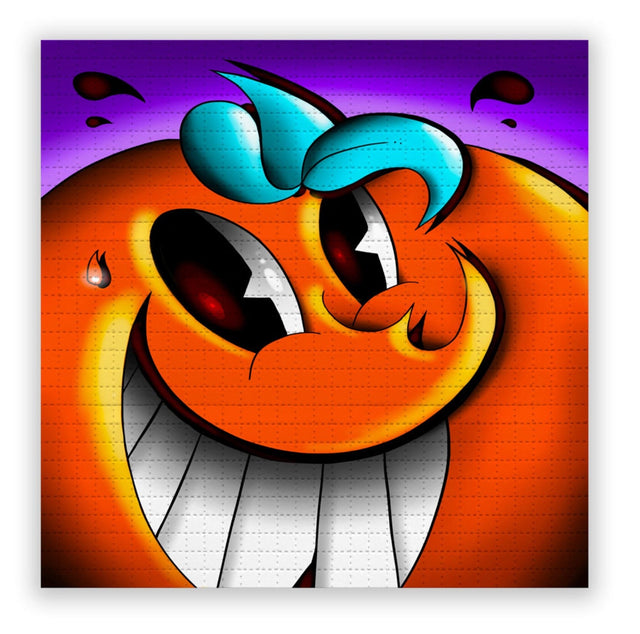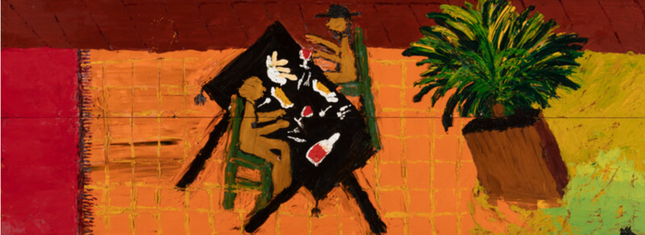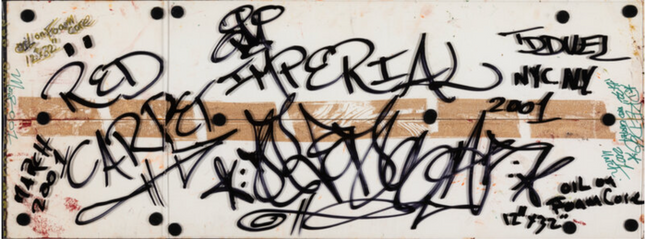
Orange


Dred66- Tyree Davis Red Carpet Imperial Original Oil Painting by Dred66- Tyree Davis
Red Carpet Imperial Original Oil Painting by Dred66- Tyree Davis of a Kind of Artwork on Foam Core Mounted to Acrylic Sheet From Street Art Pop Artist. 2001 Signed Acrylic Painting Original Artwork Size 32x12 Depicting 2 People Sharing a Meal at a Table with Wine Over a Massive Red Carpet. Tagged, Signed, Dated, and titled on the Back. Imperial / Red Carpet / Dred66 / March 2001 Essence of "Red Carpet Imperial" by Tyree Davis "Red Carpet Imperial" stands as a remarkable testament to the artistic prowess of Tyree Davis, known in the street pop art and graffiti artwork community as Dred66. This original oil painting, a one-of-a-kind artwork on foam core mounted to an acrylic sheet, exemplifies the fusion of street art aesthetics with the traditional oil painting medium. Created in 2001, this signed acrylic painting stretches across a sizeable 32x12 canvas, depicting a scene that is both intimate and grandiose — two people sharing a meal at a table with a wine bottle over a massive red carpet. Davis's "Red Carpet Imperial" encapsulates the ethos of street pop art by bringing the personal into the public sphere. The subjects of the painting — two individuals engaged in the simple act of sharing a meal — are universal in their relatability. Yet, they are set against a backdrop that speaks to grandeur and excess. This contrast sketched out in the earthy yet bold tones of the oil paints, evokes a narrative that is both a celebration and a critique of cultural and social dynamics. It's a snapshot of life that is as much about the environment as it is about the individuals within it. Signature Style of Dred66 and Artistic Influence Tyree Davis's signature style is evident in how "Red Carpet Imperial" harmonizes street art's raw energy with a gallery piece's sophistication. The painting carries the hallmarks of graffiti in its background — tagged, signed, and dated by the artist, which is a nod to the graffiti tradition of artists marking their territory and claiming space. This element of the artwork connects the practice of street art with the established conventions of fine art, creating a dialogue between two worlds often seen as disparate. The tactile quality of the foam core gives the painting a three-dimensional feel. At the same time, the mounting on an acrylic sheet provides a modern twist, suggesting the protective glazing found in street art installations. These material choices by Davis reflect a thoughtful consideration of medium and message, ensuring that "Red Carpet Imperial" resonates with the authenticity of street art even as it occupies a different physical and conceptual space. In "Red Carpet Imperial," Davis offers a cultural commentary that is as relevant today as it was at the beginning of the millennium. The work's title, 'Imperial,' hints at a critique of societal structures and the seduction of luxury, a theme deep in street pop art's veins. The painting invites viewers to reflect on the disparities and contradictions that pervade modern life by placing an everyday scene in a context that implies wealth and luxury. Moreover, the painting's year of creation, 2001, situates it at a time when street art began gaining widespread recognition as a legitimate art form. Tyree Davis contributed to this burgeoning recognition through his work, bridging the gap between the street and the gallery and challenging preconceived notions about the value and place of graffiti and street pop art in the art historical canon. Legacy and Continuing Influence Tyree Davis's "Red Carpet Imperial" legacy continues influencing the street art community and the broader art world. It stands as a powerful example of how the aesthetics and themes of street pop art can be translated into different mediums and settings, maintaining their impact and resonance. Davis's work invites ongoing discourse about the intersections between art, culture, and society through its bold visual language and underlying social commentary. This conversation is as vital now as it was two decades ago. "Red Carpet Imperial" is more than just a painting; it is a piece of social fabric, a historical document, and a beacon of street pop art's enduring power to communicate, challenge, and captivate. Tyree Davis, as Dred66, has crafted an artwork that is both a reflection and a critique of the world it inhabits, securing his place in the annals of street pop art history.
$5,000.00



